With lockdown-like restrictions being eased across India, and a reduction in daily COVID-19 cases, businesses across the country are opening up. Malls, hotels, theatres and retail showrooms are crawling back to normalcy.
However, there is a wave of caution around. With talks of a third wave of COVID-19, retail outlets and theatres are not completely open.
Across the country, state governments have removed stringent movement conditions, so that customer-facing outlets like hotels and malls can open up. Timing restrictions still continue in places like Mumbai and Bengaluru.
Footfalls back in malls, retail outlets
After two months of lockdown, retailers are now back in business at several locations. At some cities, such as Kolkata and Delhi, the government has also allowed malls to resume operations. In Maharashtra, though shopping centres in Mumbai are yet to get a nod, malls in Navi Mumbai and Thane are operational.
Shopping malls and retailers have been preparing for the reopening and have vaccinated a large number of their employees. Thane-based Viviana Mall, for instance, claims to have vaccinated its entire 65 staff members, and 90 percent of its outsourced employees have been given anti-COVID shots.
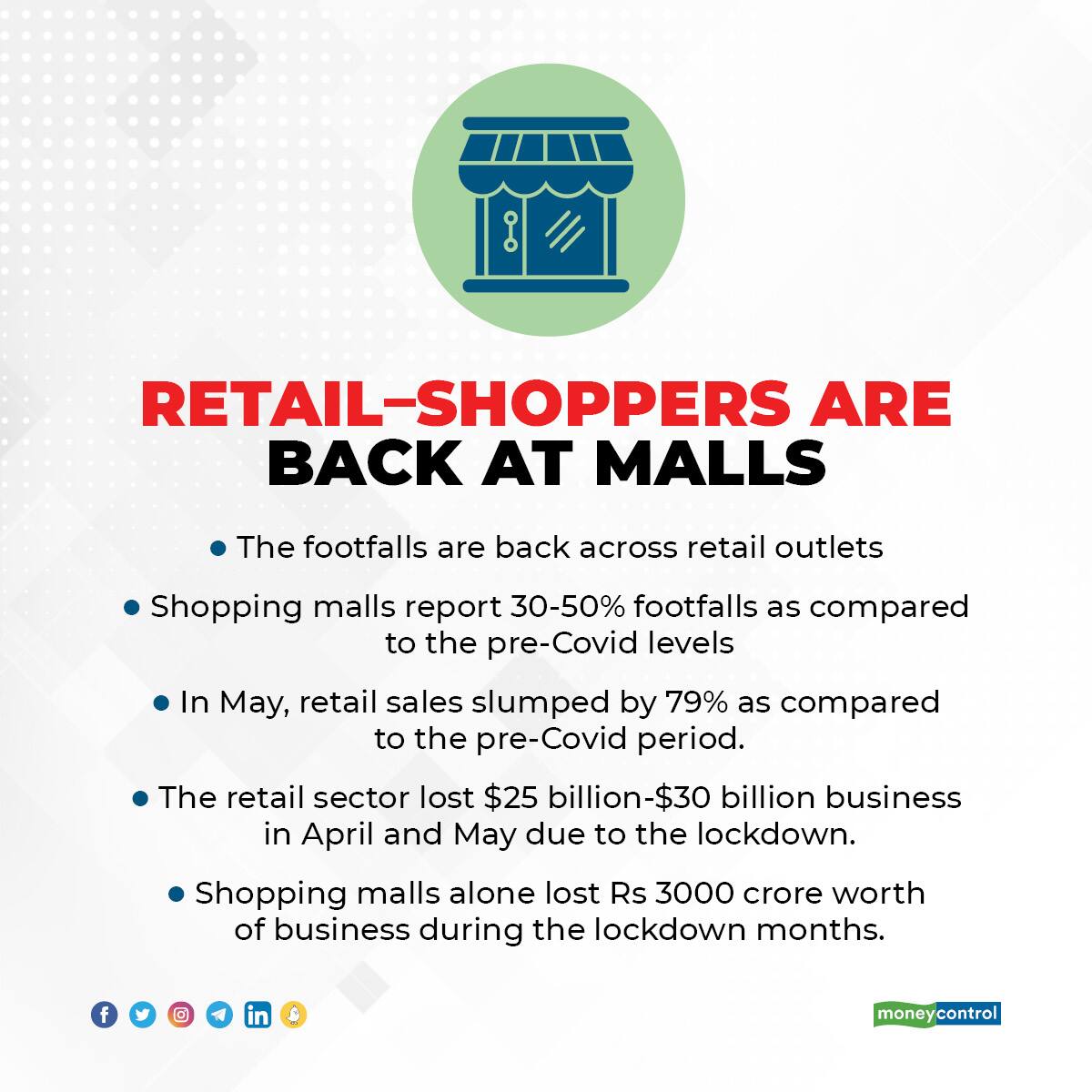
“Since we are going through this for the second time, we are well prepared. We are enforcing the same protocols as the last time in terms of sanitisation of premises and crowd control,” said Anuj Arora, General Manager, Oberoi Mall, Mumbai.
Shopping centres and retailers, which have resumed operations in locations such as Delhi and Thane, have reported footfalls to the levels of 50 percent.
“Last year, it took us 3-4 months to clock 60 percent of pre-COVID footfalls after the reopening, but this around, we are already seeing 50 percent footfalls,” said Rima Kirtikar, Chief Marketing Officer, Viviana Mall.
According to Yogeshwar Sharma, CEO of Delhi-based Select City Walk, the recovery this time is three times better than last year’s unlock.
In small towns and rural areas, too, retailers are witnessing a decent turnout of consumers. V-Mart, which has been able to open 70 percent of its 279 stores, has seen a drop in footfalls as impulse buyers are absent even as sales are picking up.
According to Vineet Jain, Chief Operating Officer, V-Mart Retail, in some of the company’s outlets, which have recently opened up, it is clocking even better sales than pre-COVID times.
Retail industry sales decline 79% in May
Retail industry associations point to the losses incurred. The Retail Association of India (RAI), in a recent report, revealed that retail industry sales declined by 79 percent in May 2021. The sales were down 49 percent in April, as per a RAI report.
According to Kumar Rajagopalan, CEO of RAI, the sector has lost $25 billion-$30 billion in April and May 2021, which is more than half the $40 billion-$45 billion in business typically generated during these two months.
Malls have incurred losses to the tune of Rs 3,000 crore in the eight weeks since lockdowns were imposed by state governments, including Delhi and Maharashtra, the Shopping Centres Association of India said in May.
The retail industry is hopeful that the pent-up demand will speed up recovery, going ahead.
Fitness, health still top priorities
Even standalone brands are slowly welcoming customers. This is true especially for firms in the athletic products segment.
“We are glad to reopen doors to our business in a phased manner and look forward to resuming operations with the highest safety standards. Over the past year, fitness and health have been some of the top priorities for consumers and we want to enable them to reach their goals in a safe environment," said Rahul Vira, CEO, Skechers South Asia.
Vira added that Skechers has witnessed pent-up demand in multiple global markets as they reopened, and that they anticipate the same in India.
On the electronics side, large appliance dealers are getting back to business. However, impending fears of another lockdown are not completely erased.
Madhavan Kurup, proprietor of Classic Home Appliances and Accessories, one of the large appliance dealers in South India, said that while electronics stores are now open, crowds remain thin.
“Since we also deliver via e-commerce platforms, not too many people have started visiting the stores. We hope that the situation normalises by July,” he added.
Travel industry takes baby steps
The travel and tourism industry was the worst-hit amidst the COVID-19 lockdown. Several thousand travel agents went out of business, and many in the industry lost jobs as leisure travel was completely wiped out.
While the industry was slowly picking up the pieces between November 2020 and February 2021, the second wave in March led to another major shutdown.
But with restrictions relaxed, there is a slow pickup in the travel industry now. Reports say that flight bookings have picked up since June as Indians have now started stepping out to nearby destinations for a quick getaway.
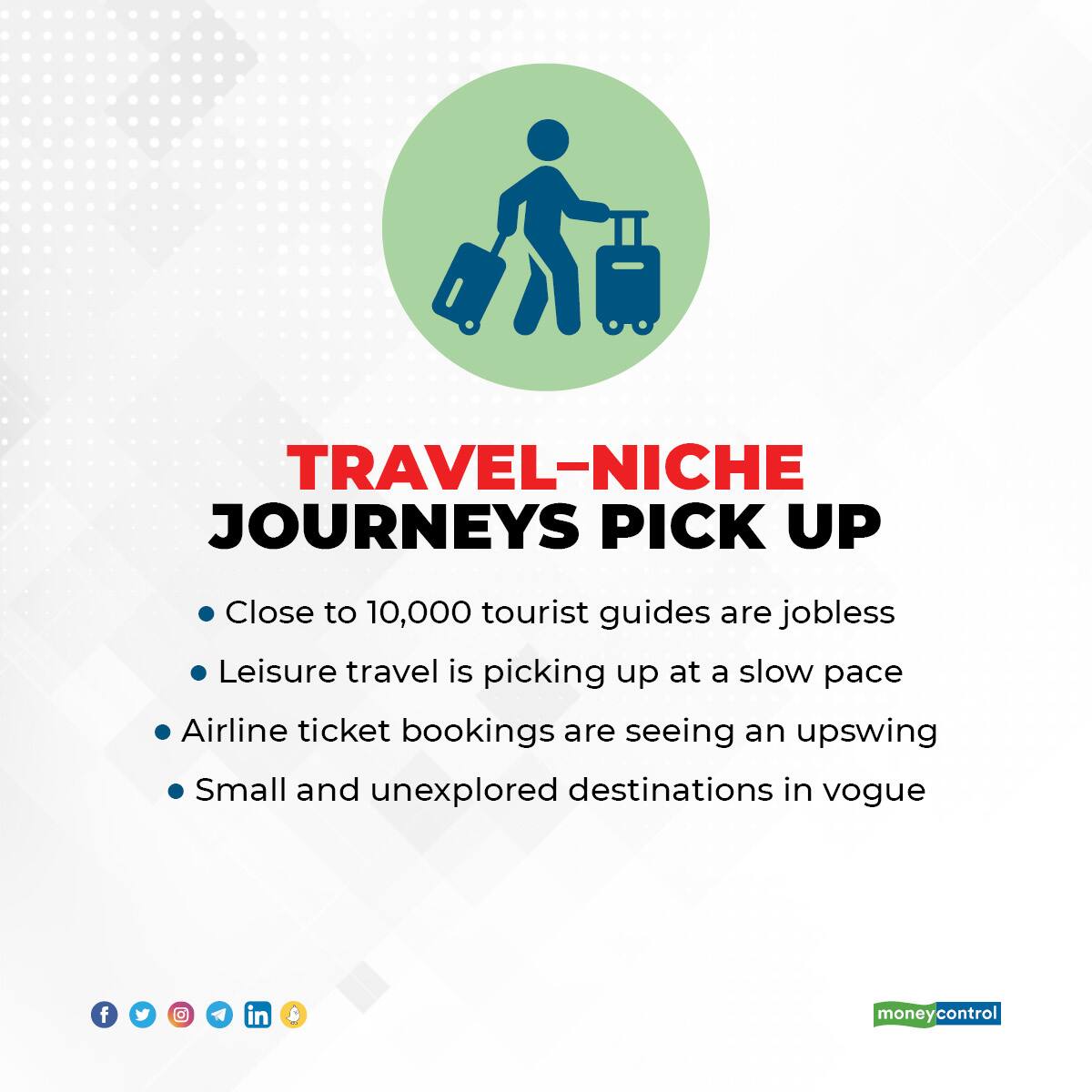
Popular destinations include Goa, Manali, Rishikesh and Shimla. On the international front, Thailand is planning to reopen on July 1 and fully vaccinated tourists would be able to visit the country. Attractive discounts and room rates as low as $1 per night are also being planned.
However, as reported by Moneycontrol, the tourism industry is nowhere close to its peak and travel agents continue to be in a deep financial crisis.
Theatres and shoots
While the Maharashtra government allowed shooting for films and TV and web series to resume from June 7, the move comes with its own set of challenges.
Production companies point out that shooting in Mumbai is allowed till 5 PM in a bio-bubble.
Siddharth Anand Kumar, vice president – films and events, Saregama India, said: "To stop shooting at 5 pm means a producer has to bear a loss of a certain number of hours of productivity and that will escalate the budget because in film shooting, time is money."

Gautam Talwar, Chief Content Officer at MX Player, said: "Undoubtedly, shoots have suffered a setback and the 5pm deadline is a challenge because this restricts storytelling that requires a night setting or an outdoor shot after sundown.
Filmmaker and producer Akshay Bardapurkar pointed out that actors would usually go back home after a shoot, but now there would be expenses on their accommodation.
Due to restrictions in shift timings and bio-bubbles, production budgets are estimated to increase by 10-12 percent.
While shoots have begun, theatres are also opening up to crowds in smaller towns like Ludhiana and Aurangabad, though there are curbs on capacity inside movie halls. In places like Mumbai, Kolkata and Chennai, they are yet to reopen.
Maharashtra, which accounts for a big chunk of film revenue, has allowed cinemas to reopen normally in areas listed under level 1 and at 50 percent occupancy in level 2 areas.
Exhibitors are cheering this move as last year Maharashtra was one of the last markets to allow theatres to restart operations.
Amit Sharma, MD of Miraj Cinemas, India’s fifth-largest multiplex chain with a screen count of 152, said it is good news for multiplexes as Maharashtra leads the release Bollywood films.
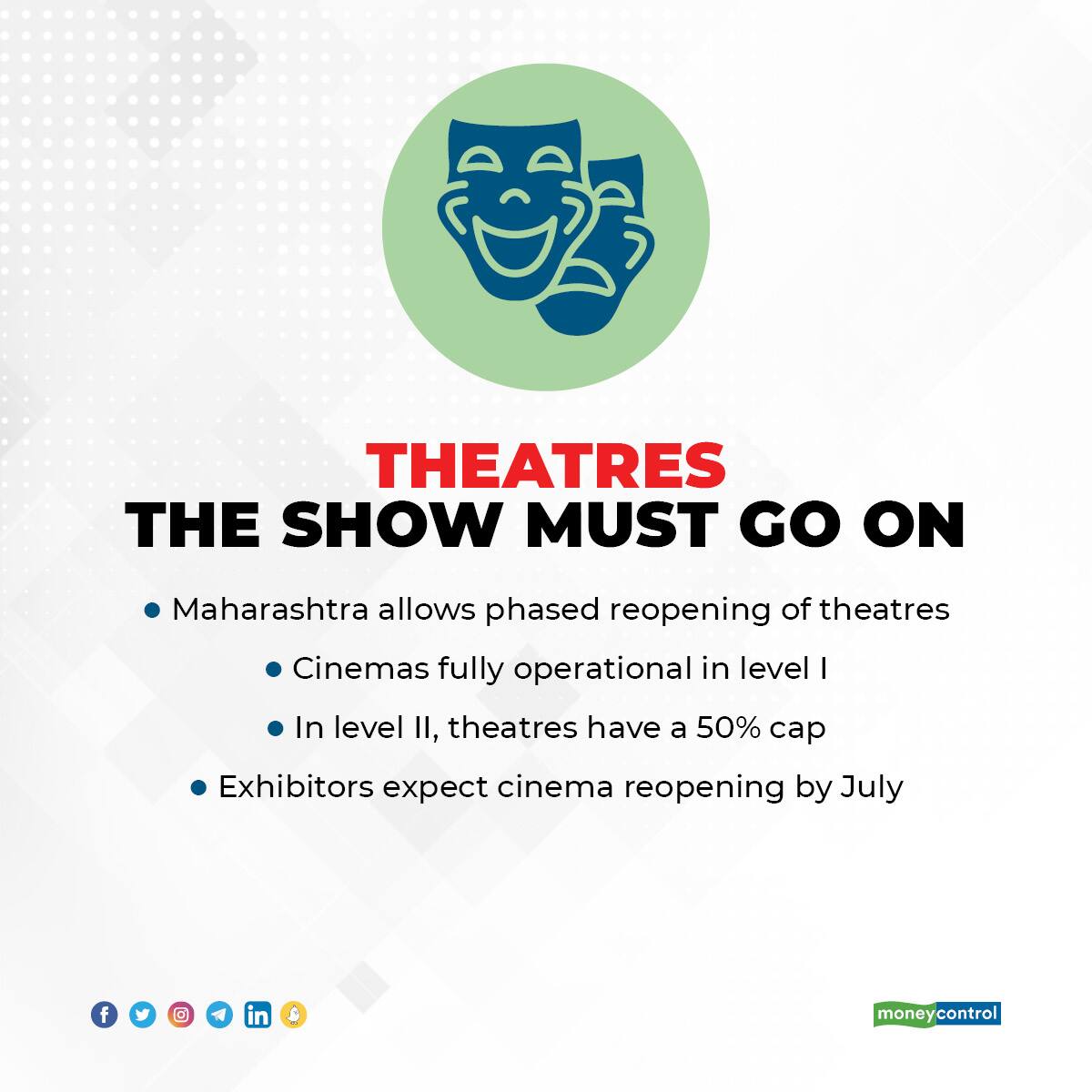
Devang Sampat, CEO, Cinepolis India, said he hopes other states will follow suit soon. Sharma expects that, by mid-July, cinemas would reopen in 80 percent of the country.
However, content will be an issue as for such a reopening, you do not have confident content makers to release the film only for certain sectors, said Sharma.
Yet, Hollywood ventures like The Quiet Place 2 and Fast & Furious 9 will be available as these films have released in international markets already.
"Regional content will start releasing immediately upon reopening and we expect to have Bollywood content in another 4-6 weeks," said Sampat.
Hospitality sector opens doors to guests
States like Maharashtra, Gujarat, Delhi, Punjab and Kerala have begun lifting the lockdown but with riders like 50 percent capacity for restaurants or only 100 people in hotels. It is only partial relaxation in restrictions and most of these places continue to remain shut during evening hours in addition to the weekends.
Anil Madhok, chairman, Sarovar Hotels and Resorts, said: “Occupancy is 20 percent right now. It will take around a month or so for the guests to come back and start booking holidays. The unlocking has had minimal effect on the sector because there is still a restriction on movement of personnel and also on free timing."
The footfalls at hotels are very low currently, say hoteliers, primarily due to the confusion with regards to the restrictions related to lockdowns, which are very dynamic and keep changing.
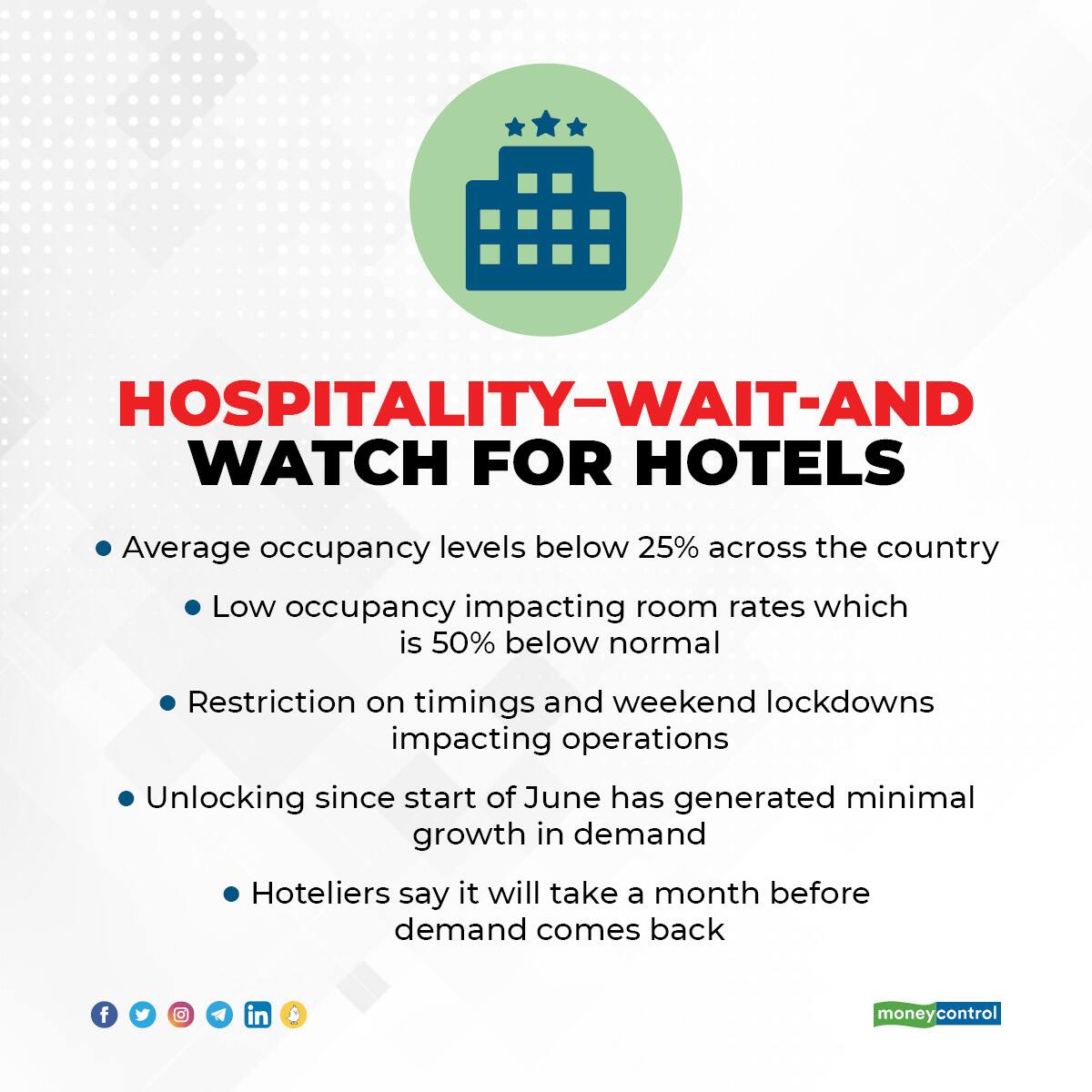
Gurbaxish Singh Kohli, vice president, Federation of Hotel and Restaurant Associations of India (FHRAI), said: "While relaxations are a good sign, each state and local authorities are imposing varying restrictions. Some places within one state are open on weekends while others aren’t. Some states allow operations until 4 pm, while others till 5 pm or 7 pm. This uncertainty is only causing confusion among customers."
Recently, Himachal Pradesh allowed travellers to enter the state without test certificates and tourist sites were thronged by travellers from neighbouring states. But people who visited Matheran, Mahabaleshwar and Lonavla from Mumbai and Pune were turned back. Lonavla was not allowing visitors during weekends.
“Such uncertainty makes the business environment unfavourable for hotels and discourages people from travelling. Hotel bookings will not see any positive movement unless the lockdown is lifted completely,” Kohli added.
When it comes to restaurants, most cities have allowed eateries to reopen. But, there are timing restrictions. This means that pubs and discotheques that have a higher proportion of crowd entering the premises after 6pm will stay shut.
Reports said that in hubs like Gurugram, restaurants have started doing brisk business while pubs are yet to catch on.
Auto showrooms thrown open
Around 80 percent of showrooms selling cars and two-wheelers are now open across the country. Southern states are still under lockdown or have strict guidelines on operating hours, which, dealers complain, are not consumer- friendly.
“The first 10 days of June 2021 witnessed strong retail sales growth but that can be attributed to the pent-up demand of April and May. There is no guarantee that this rise will continue in the coming months,” said a senior functionary of the Federation of Automobile Dealers Association (FADA).
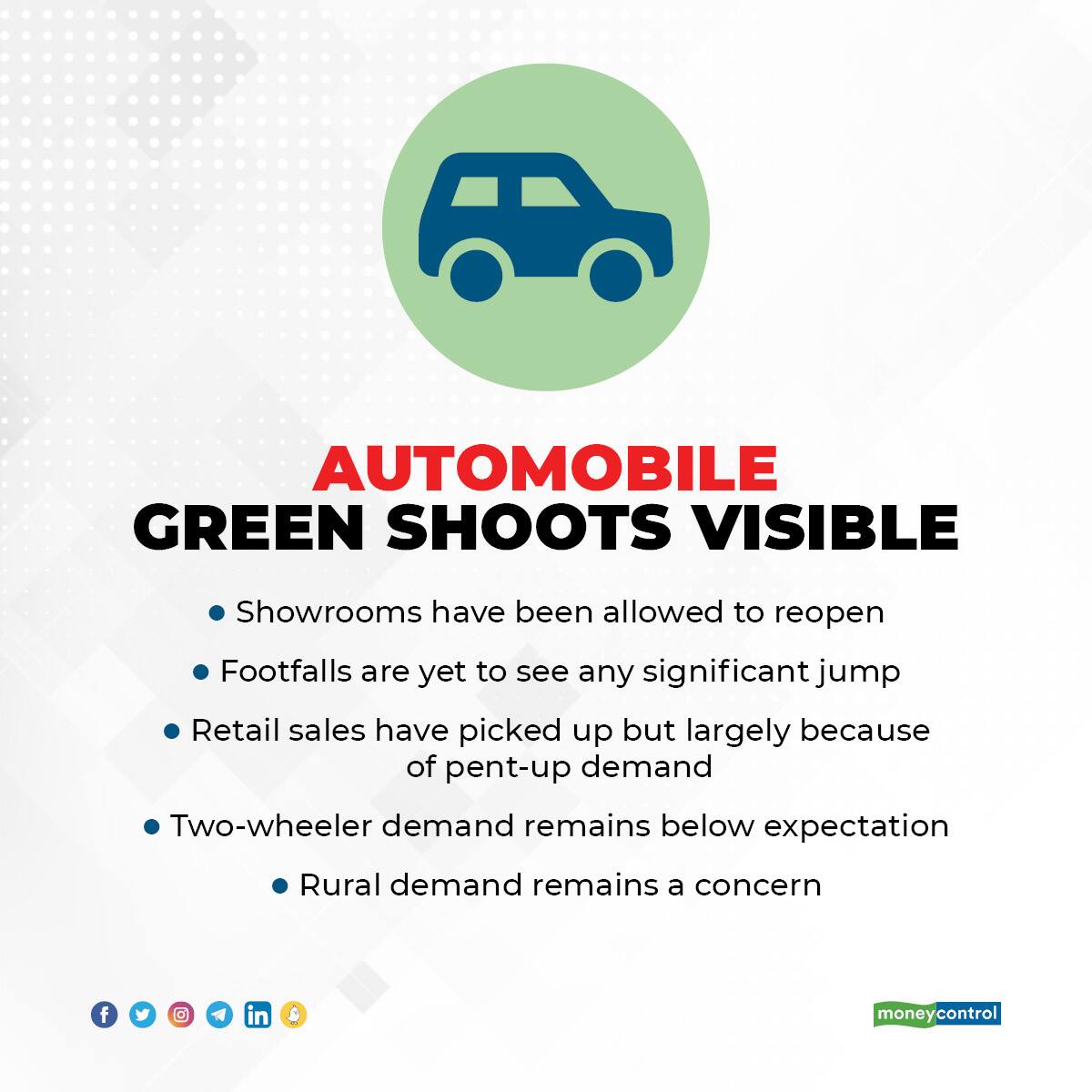
Automobile retail sales crashed 55 percent in May compared to April as COVID-19 lockdowns imposed across several states crippled vehicle offtake.
Total vehicle retails (including tractors) during May fell to 535,855 units from 1.18 million in April, as per FADA data.
However, a clear path to recovery is being seen. The first nine days of June have seen better-than-expected retails due to the pent-up demand, said FADA. If the trend continues, there would be almost similar sales when compared to June 2020, it said.
“Enquiry levels are on par with June last year, and, definitely, better than May. There is a bit of unsettling air within the buyer community, which should get eased off as we move into July," said a sales head of one of India’s top three two-wheeler makers.
What is the way forward?
The pace of vaccination and how well the country is able to manage the COVID-19 case load will be the key to the businesses staying open and doing brisk sales.
India’s COVID-19 case tally exceeded 2.96 crore with 62,224 new cases reported, as per the health ministry’s June 16 update. There were less than 1 lakh new cases for the ninth day in a row.
As many as 2,542 new deaths reported in the last 24 hours (as of 8am on June 16), new recoveries were at 1,07,628 in the same period, the latest release showed. Recoveries outnumbered daily new cases for the 34th consecutive day.
About 26.19 crore vaccinations have been administered across India, according to the June 16 update. Active COVID-19 cases stand at 8.65 lakh.
(With inputs from Devika Singh, Maryam Farooqui, Swaraj Baggonkar and M Saraswathy)